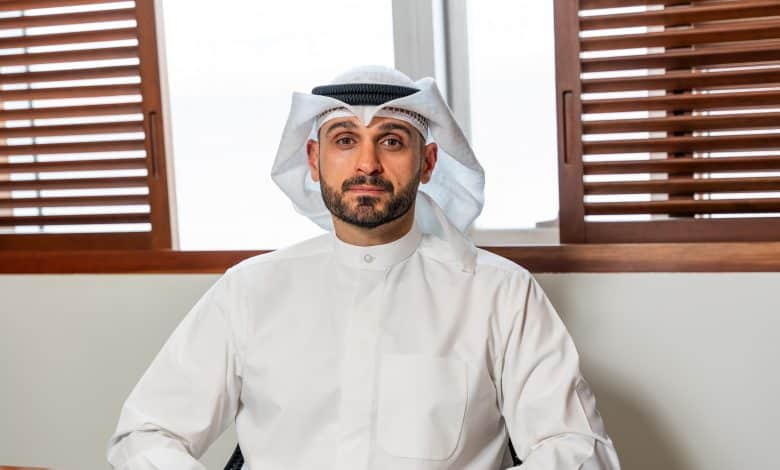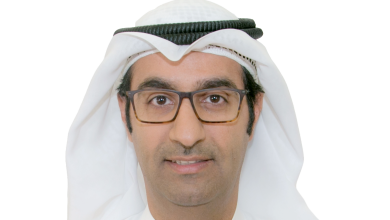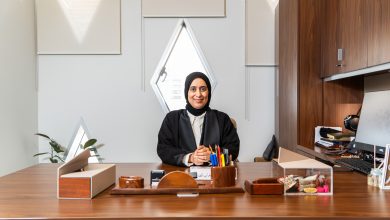Engineering the Future of Cooling: Ammar Bahman’s Innovative Journey
Harnessing Nanotechnology to Boost Energy Efficiency in AC Systems

“The Jaber Al-Ahmad award would not have happened without the support of my research assistants, my colleagues at Kuwait University, and especially my students. They are the basis for all my ideas and work” Ammar Bahman
When Ammar Bahman started to study engineering, he quickly realized that one specialty in his chosen field stood out: “The mechanical engineer is like a joker. He is multidisciplinary, which means that he can communicate with a civil engineer as well as with a chemical engineer. Because of that, a mechanical engineer can play anywhere,” said Bahman, who is now an Assistant Professor in the Department of Mechanical Engineering at Kuwait University.
Having grown up with Kuwait’s sweltering summer temperatures of 55 degrees Celsius and above, Bahman soon decided to use this “joker” engineering ability to focus on making air conditioning more efficient. “I was always eager to find solutions to how we can cool buildings,” said Bahman, who studied first at Kuwait University, then the University of South Florida in Tampa (USA), eventually getting his PhD at Purdue University in the U.S. state of Indiana.
Most air-conditioning systems were designed for temperatures of up to 45 degrees Celsius, explained Bahman. Are those systems forced to operate at temperatures beyond this range, they have to work extra hard and start consuming more power. In his research, Bahman is developing cutting-edge innovations that address this, which could lead to energy savings and better protection for the environment. For his work, Bahman was awarded a 2024 Jaber Al-Ahmad Prize for Young Researchers.
One of Bahman’s ideas involves injecting nanofluids into air-conditioning and refrigeration units. “Nanofluids are created by mixing tiny solid particles with a base fluid that can be water, oil, or any other kind of liquid,” he said. A nanoparticle typically measures between one and 100 nanometers, that is between one-billionth and ten-millionth of a meter. For comparison: A sheet of paper measures about 100,000 nanometers in thickness.
Integrating such particles into AC units can increase their efficiency in two ways. Adding them to the oil of the compressor – the component that pushes the cooling liquid, or refrigerant, through the system – helps it run smoother. “It’s like putting sand on a table, then making circles with your hand. Your hand glides more easily because it’s sliding above the sand,” said Bahman. “Similarly, the nanoparticles cause the compressor to run with less friction, which means you save power.”
Nanoparticles can also be mixed with the refrigerant itself. This liquid, which circulates through the AC system, provides the actual cooling: It enters the house cold and absorbs the heat from the rooms, in the process warming up and turning into a gas. The warm gas circles outside the home, where it gets compressed while releasing the heat it had picked up and reverting to being a cold liquid. Then the cycle starts over.
Bahman realized that this process could be made more effective by introducing nanoparticles that possess a high thermal conductivity to the refrigerant. That is: Microscopically tiny crumbs of materials that excel at absorbing heat. Examples are many carbon-based substances such as nanodiamonds or graphene. Adding such nanoparticles lets refrigerants take up more heat faster, allowing for more efficient and compact AC systems that consume less power.
Bahman has already tested this approach in a psychometric chamber, which consists of two compartments, one simulating the indoors, the other the outdoors. When he heated the outdoor compartment to the 55 degrees Celsius of a Kuwait summer day, the nanofluid-enhanced cooling system used at least 8% less energy than a conventional refrigeration unit – a significant reduction. “Imagine how much energy we can save if this was not just one unit and one room but a city block or the whole country,” said Bahman.
Another of Bahman’s ideas involves Subcooling. In other words: making the refrigerant circle through an additional circuit in which it is cooled extra low before it re-enters the house. Having the refrigerant subcooled provides an additional boost to the air-conditioning, making it more efficient. Bahman has developed a system that uses solar energy for the extra cooling step, which minimizes the environmental impact and dependency on fossil fuel power plants. His innovative solar-powered subcooling mechanism recently received a US Registered Patent.
In the longer term, Bahman hopes to combine nanofluids and solar-powered subcooling into a joint system. “I want to reduce the energy consumption without compromising the thermal comfort of the people inside the house,” he said. Currently, he is researching which nanoparticles are best suited for his purposes. It might be a hybrid, that is a nanomaterial formed by combining different substances. “This can allow you to benefit from the best of each material,” said Bahman. “Maybe one is low cost, the other one expensive but with a high thermal conductivity. By combining them, the hybrid nanoparticle could provide high thermal conductivity at less cost.” A promising candidate is aluminum oxide. “We can source it from recycled materials, which would be good for the environment, then mix it with a highly conductive material such as carbon-based nanotube,” said Bahman. First, though, Bahman has to overcome some challenges such as making sure that hybrid materials of this kind stay stable as they churn through the AC.
But already, Bahman’s thoughts are moving beyond simple air-conditioning systems to the role that buildings themselves could play in keeping their inhabitants cool. “For example, what if we painted houses with paints that contain nanoparticles, which absorb less heat?” he wondered. “Would that make them more energy-efficient?” The Jaber Al-Ahmad Prize will motivate Bahman even more to pursue his research. “The award would not have happened without the support of my research assistants, my colleagues at Kuwait University, and especially my students. They are the basis for all my ideas and work.”




